Upgrade your favorite tacos, nachos and enchiladas with these tender smoked carnitas! Pork shoulder is cooked low and slow on the smoker and then finished in a citrusy braise until it transforms into melt-in-your-mouth shredded meat. These pork carnitas are perfect for serving a large crowd, and you will get so many uses out of this one recipe.
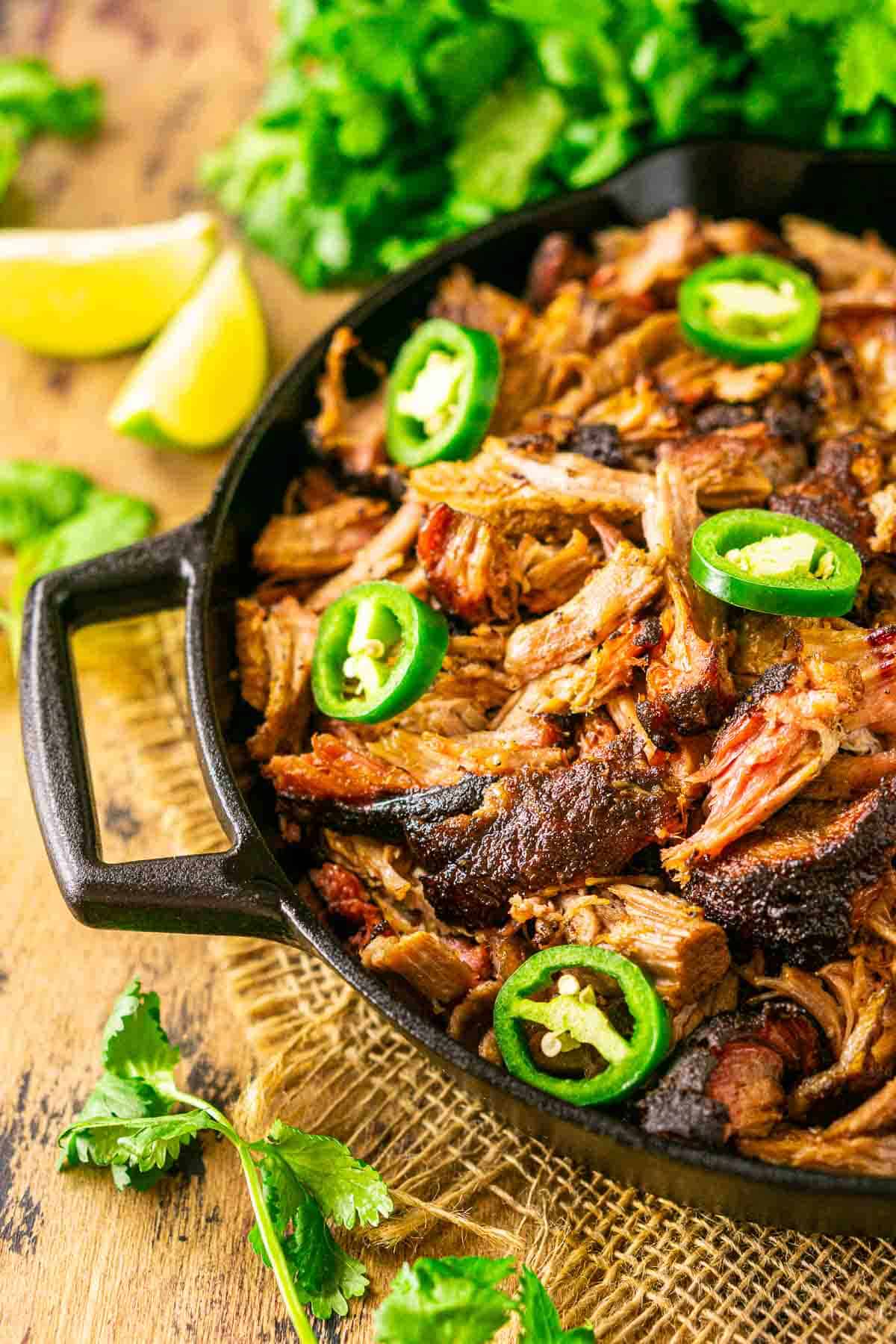
Jump to:
What Are Carnitas?
Carnitas translates to “little meats” in Spanish. Essentially, this is a Mexican pulled pork that braises in citrus, seasonings and lard until the meat becomes fork tender.
With this smoked carnitas recipe, we take a slightly different approach. We first smoke the pork to infuse it with that wood flavor, and then we finish it in a lard-based braise like traditional carnitas. The end result is the most succulent, flavorful shredded pork you’ll want to use in all your favorite Mexican dishes — get ready for the best pork tacos of your life.
Why You’ll Love This Recipe
That touch of smoky flavor: You’ll just love the extra depth of flavor the smoker adds for even more delicious carnitas.
Great for parties: This makes a lot of meat with very little effort. No one will go hungry when these carnitas are on the party menu.
Makes the best leftovers: These carnitas reheat and freeze beautifully, so you can have pork for days.
Related: For more Mexican dishes, you’ll also love these crispy chorizo tacos and shredded beef enchiladas.
Ingredients
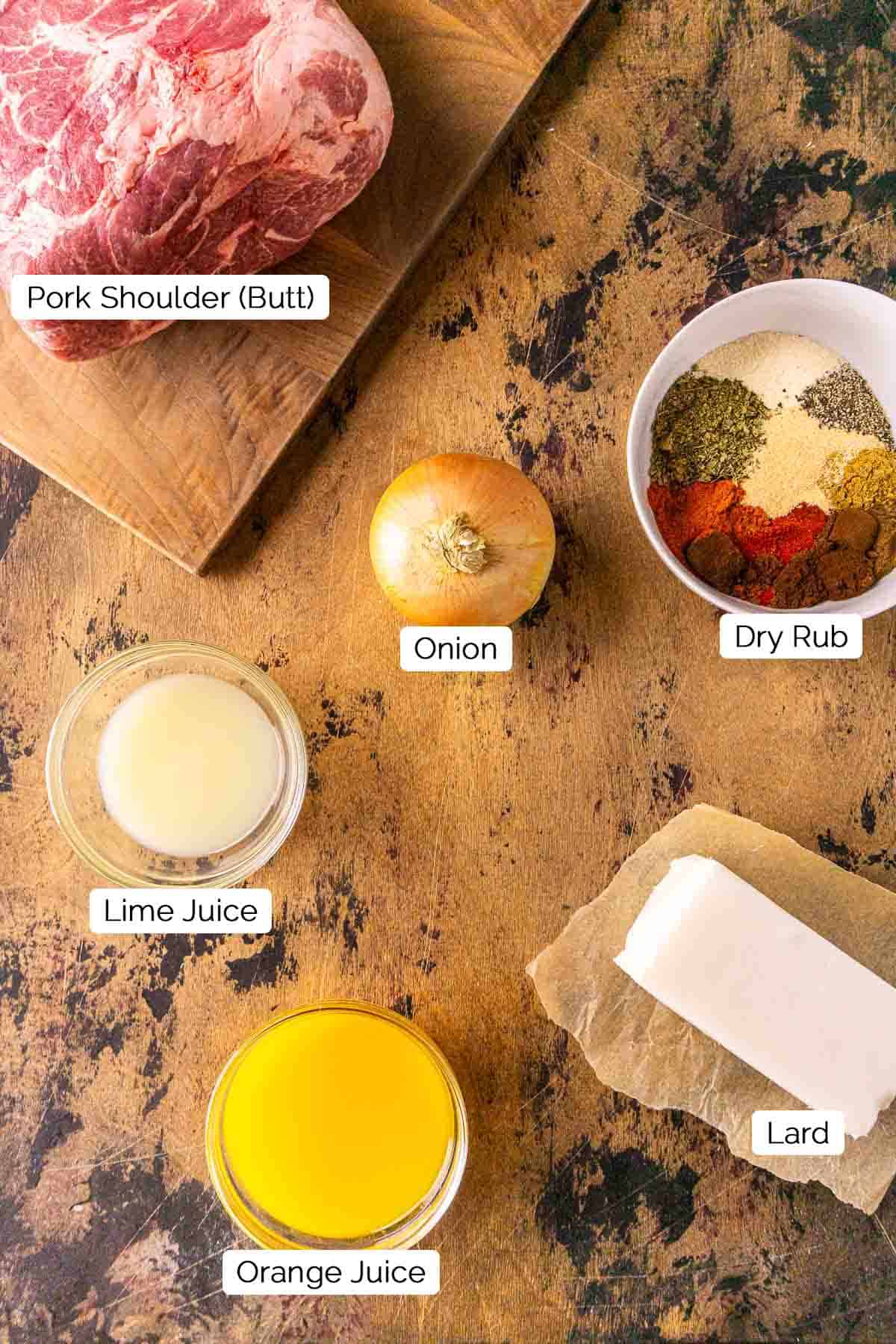
Pork shoulder (butt): Specifically, we want the pork butt cut rather than the pork shoulder picnic cut. The pork butt cut comes from the pork’s shoulder, but it’s higher on the pig and shows off more fat marbling for better flavor and tenderness. You might also see it labeled as a Boston butt.
Dry rub: For this seasoning blend, we use chili powder, brown sugar, salt, black pepper, ground cumin, garlic powder, onion powder, smoked paprika, dried Mexican oregano, cayenne pepper, ground allspice and ground cloves.
Lard: Lard is traditional and adds a much richer flavor than shortening or olive oil. You can typically find it in the baking section of the grocery store. Bacon fat can work in a pinch.
Orange juice and lime juice: This gives the pork a nice brightness, and the acid works as a tenderizer.
Step-by-Step Instructions
Step 1: We start by stirring together the spices for the dry rub in a small bowl and evenly coating the entire pork roast with the seasoning (photo 1). That includes the top, bottom and all sides. If you have time, I recommend wrapping the pork in plastic and refrigerating it overnight to dry brine, which enhances the flavor and makes for juicier, more tender meat.
Pro tip: You will likely have extra seasoning. Reserve the extras because we use that in step 3.
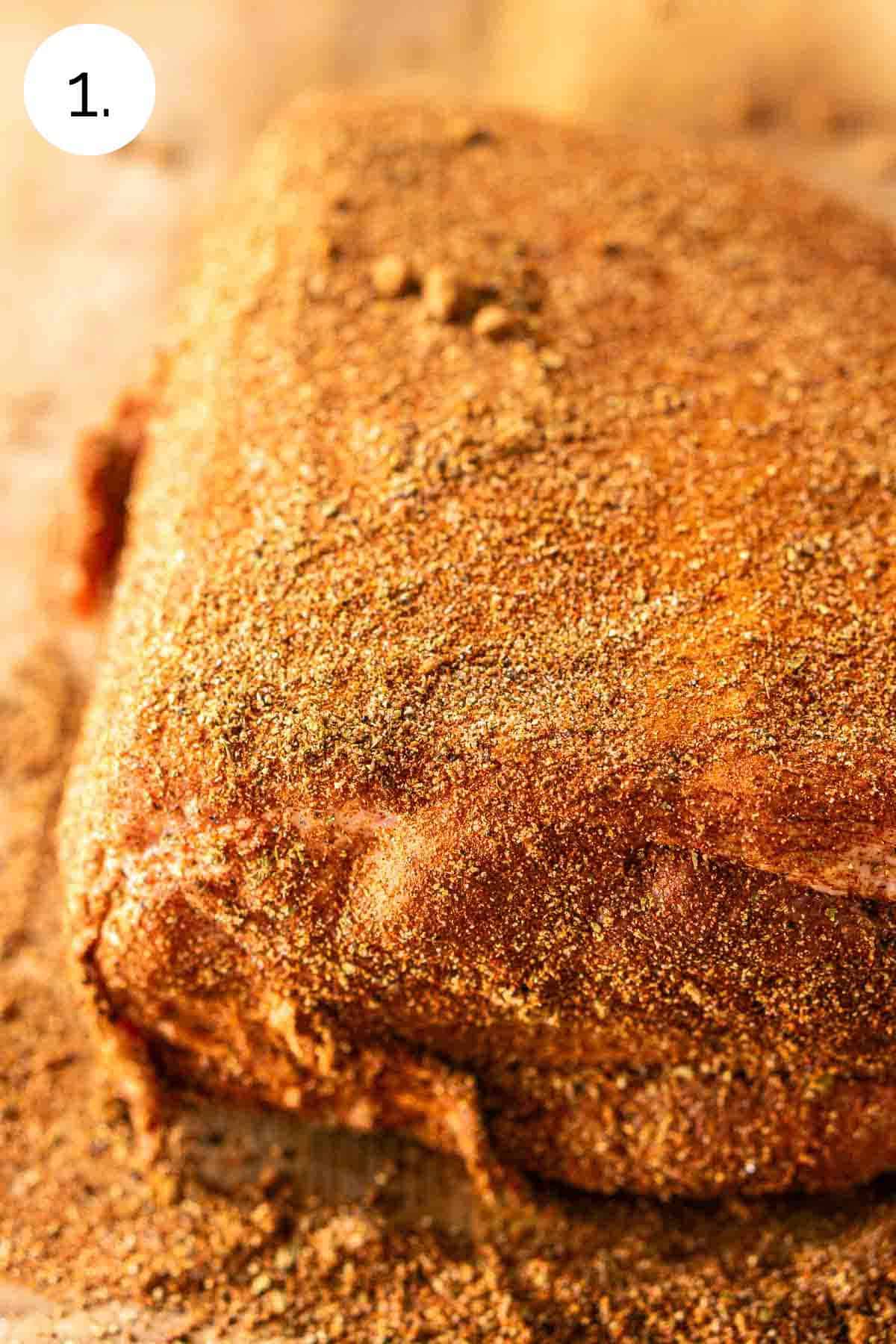
Step 2: When we’re ready to smoke the meat, we place the seasoned pork shoulder directly on the grill grates of a 225-degree F smoker with a water pan and close the lid to allow the pork to cook (photo 2). To monitor the temperature without having to repeatedly open the smoker, we want to insert a leave-in meat thermometer into the center of the pork.
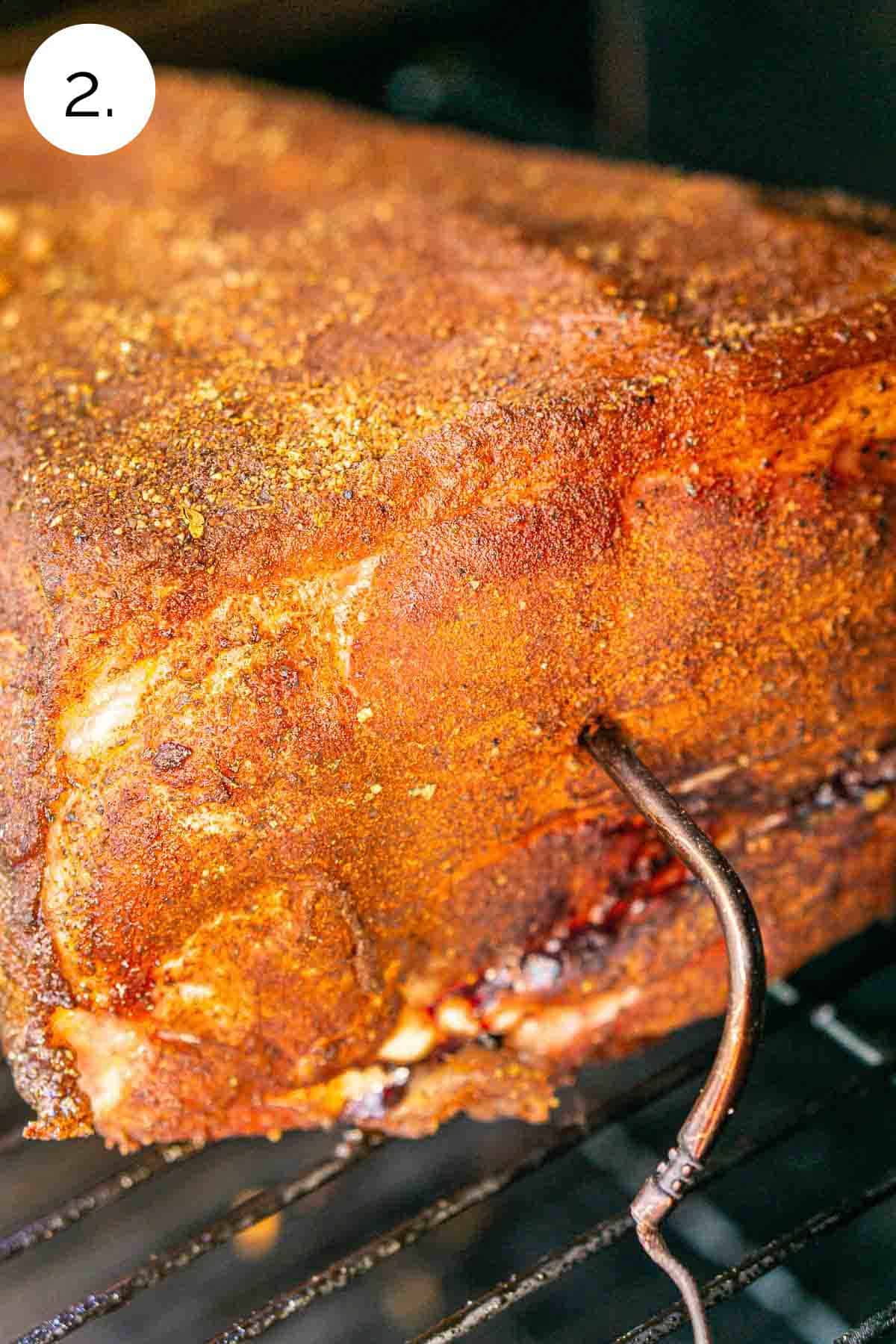
Step 3: When the pork reaches an internal temperature of 165 degrees F, we remove it from the smoker and cut the pork into several evenly sized chunks. For a bone-in pork butt, we simply cut around the bone.
Now we whisk together the orange juice, lime juice, melted lard and reserved extra dry rub in a large aluminum pan and snuggly place the pork chunks in the braising liquid with the bay leaves and onion quarters (photo 3).
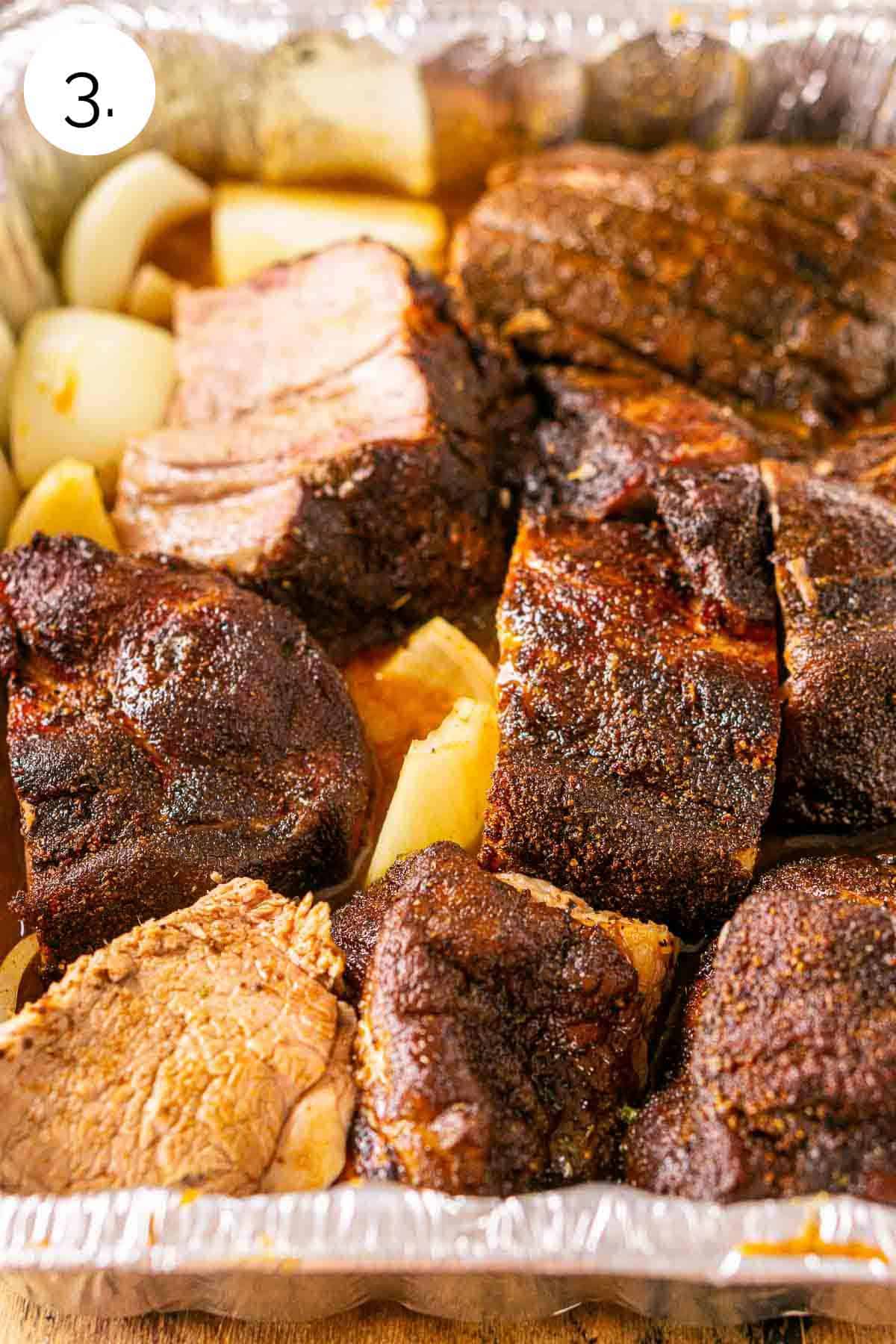
Step 4: To properly braise the pork, we tightly cover the pan with foil, place it back in the smoker with the temperature raised to 275 degrees F (photo 4). The carnitas are finished when you can easily twist the pork with a fork and the pork chunks reach an internal temperature of 200-205 degrees F.
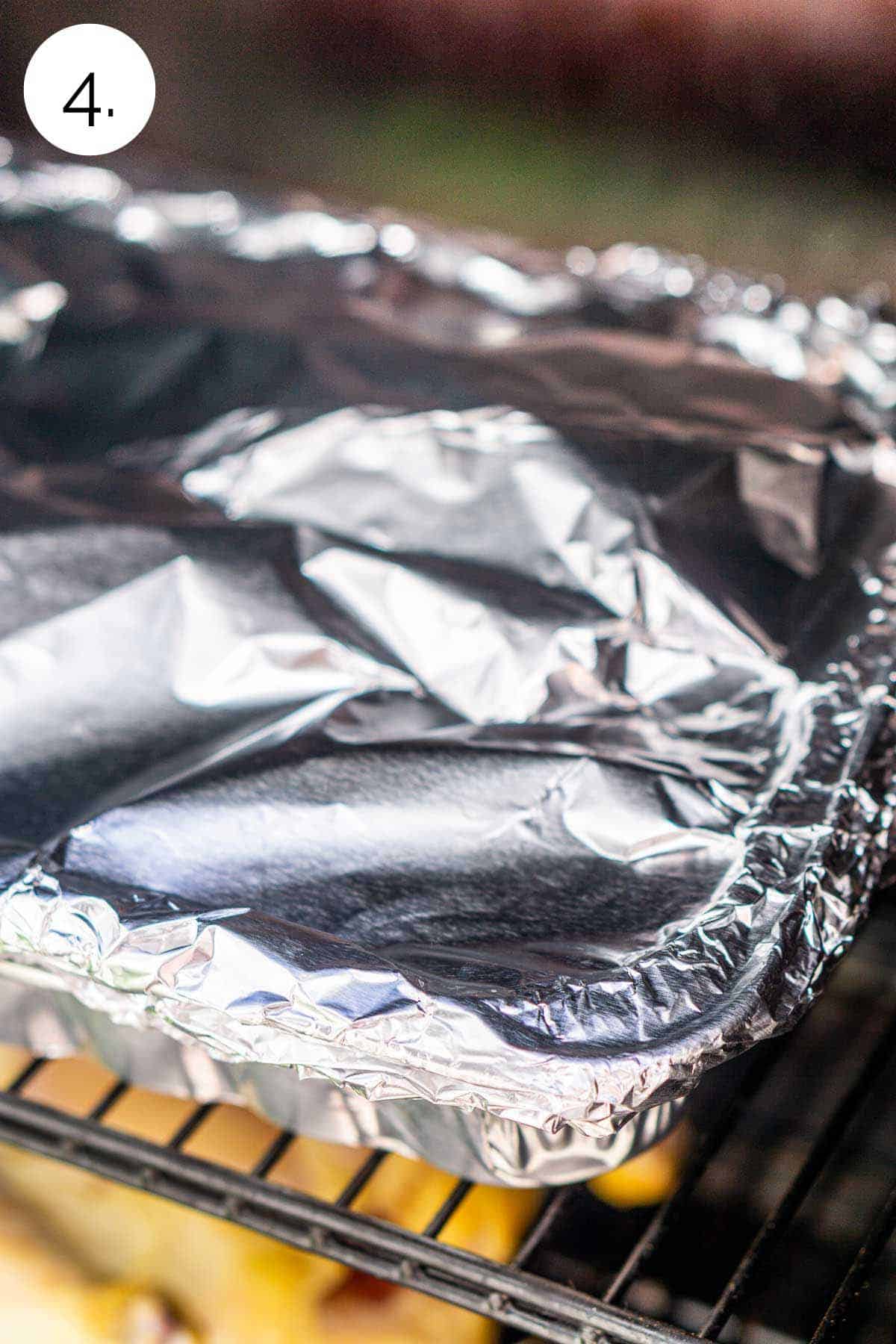
Step 5: When the meat finishes smoking, we remove it from the smoker, loosen the foil and let the chunks of pork rest. I like to rest the meat for an hour for the juiciest, most tender meat, but if you’re tight on time, you can get away with 30 minutes. After resting, we use meat claws or two forks to shred the pork into small pieces (photo 5).
Some people like their carnitas with crispy edges, so if you’d like to do this, simply spread the carnitas on a large baking sheet and broil the pork for about two minutes. This is entirely optional.
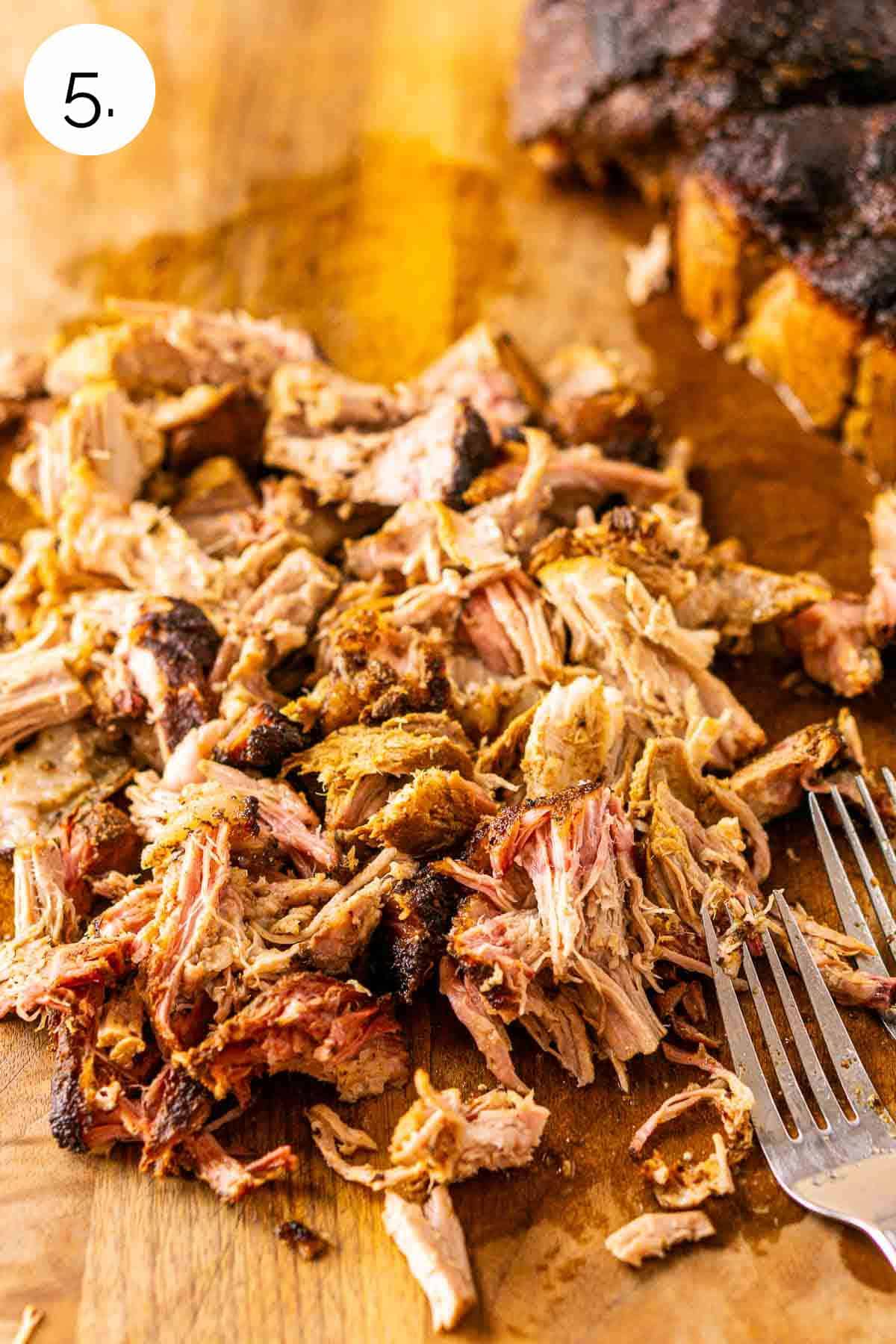
There you have it — perfect crispy pork carnitas are ready for your next taco night. Make sure you have plenty of flour and corn tortillas on hand with all the favorite fixings, such as avocado, sour cream, red onion, cilantro, jalapeño slices and salsa verde.
Recipe testing note: I tested this recipe on a Pit Boss vertical pellet smoker, but you can use any type of smoker. In fact, you don’t even have to use a dedicated smoker. Check out this resource on how to turn your grill into a smoker.
Favorite Serving Ideas
You have so many options for serving these pork carnitas. Of course, you can simply serve these carnitas on their own with a side of rice and beans, but you’ll also love these serving ideas.
- Make carnitas tacos with my smoked salsa as a topping.
- Turn them into carnitas quesadillas for the perfect party appetizer.
- Stuff them into carnitas enchiladas with a creamy poblano sauce.
- Add them to a burrito bowl or use them for a traditional burrito filling.
- Top them on carnitas nachos or carnitas tostadas.
- Sandwich them in a grilled cheese.
- Stir them into mac and cheese.
Storing, Freezing and Reheating Leftovers
If you have leftover carnitas, allow them to cool completely and then store the pork with some of the braising liquid in an airtight container in the refrigerator. The carnitas should stay good for three to four days with proper storage.
For longer storage, you can keep them in a freezer bag for up to three months for the best quality. The carnitas are still safe to eat after three months, but the quality eventually degrades over time. You can thaw the frozen carnitas by placing them in the refrigerator overnight or using the defrost setting on your microwave if you’re short on time.
- Let the pork sit at room temperature for 30 minutes before reheating.
- Spread the pork in a baking dish and tightly cover it with aluminum foil.
- Bake the carnitas in a 350-degree F oven until the meat is nice and warm, about 15-20 minutes.
When it’s time to reheat your carnitas, here’s the process.
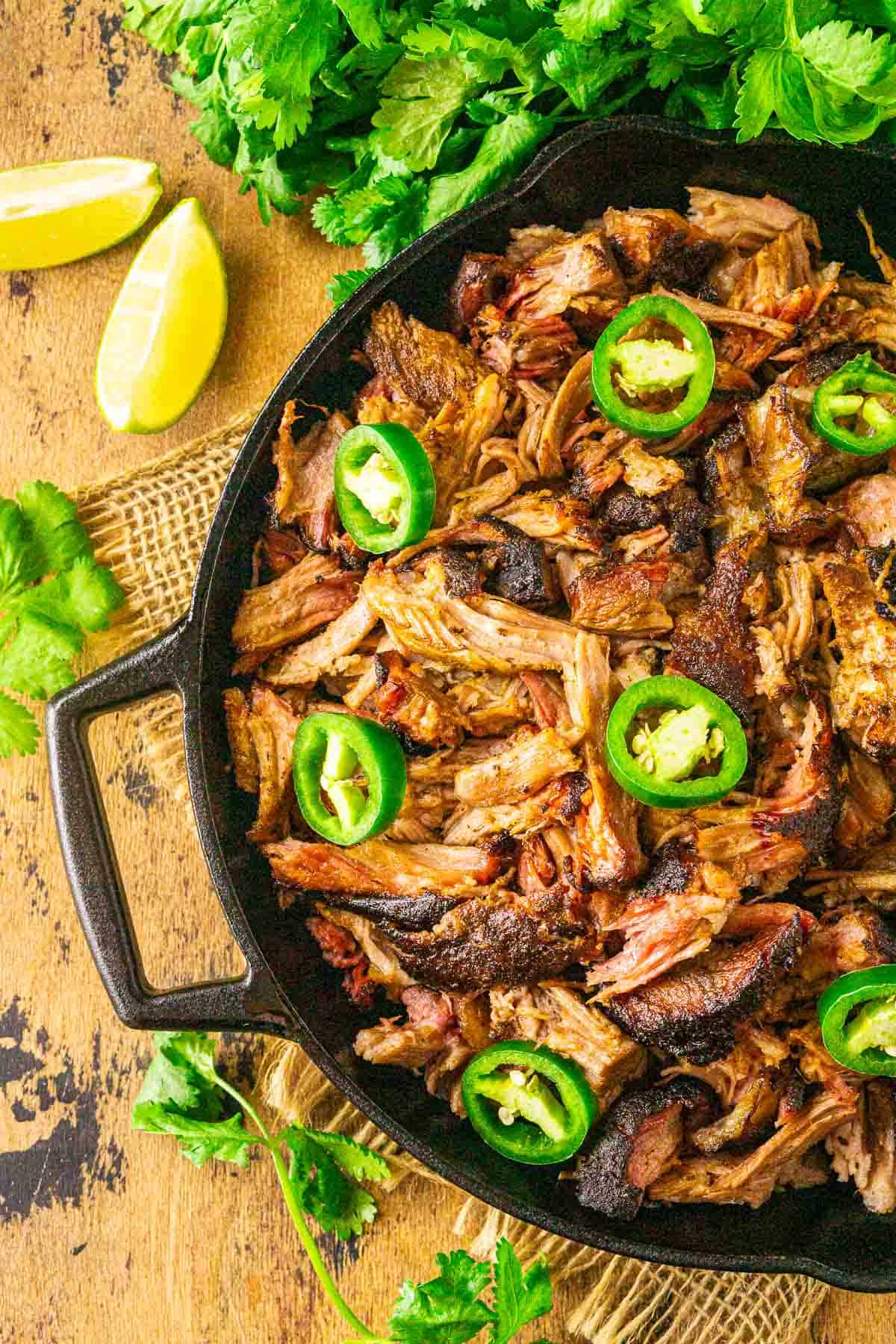
Recipe FAQs
Apple wood is classic with pork, but I also love hickory. Other great options are oak, pecan, maple and cherry wood.
Smoking is a different beast, and you cannot guarantee cooking times because so many factors are in play. That said, you can expect it to take about five to six hours for the pork to reach an internal temperature of 165 degrees F, and then about another two to three hours in the braise. In total, you can expect a smoke time of seven to nine hours along with the resting time.
You can use either cut, and you very well may not have a choice if your grocer only carries one variety and you don’t want to drive all over town looking for one or the other. Both have their benefits. Boneless pork butt is a bit easier to cut into chunks, and it cooks faster, but the bone also adds flavor.
Sure, that works just fine, and a cast-iron skillet is perfect for this. You can melt more lard in the skillet over medium-high heat and cook the pork until the edges turn crispy to your liking.
Expert Tips
Don’t worry if the lard solidifies: When you add the lard to cold orange juice, it might solidify a bit, but it will melt again once it’s back in the smoker.
Insert the meat thermometer properly: It should go into the thickest part of the meat without touching the bone. The bone holds a different temperature than the meat, so you won’t get an accurate reading.
Let the meat sit at room temperature for an hour prior to smoking: This removes the chill from the refrigeration for more even cooking.
Watch the braising liquid: A proper braise should have the cooking liquid come about halfway up the meat. If you’re low, feel free to add more liquid or remove some if it’s too high and fully covers the meat.
Perfect Pairing
If you’d like to sip a beer with your smoked pork carnitas, a citrus-forward double IPA works perfectly. The hops accentuate the spice while also cutting through the fatty cut, especially with the citrusy notes. This style also comes with a strong malt backbone that’s wonderful with the dry rub.
For wine lovers, a zinfandel is a great call. This wine shows off deep berry flavors to complement the pork, and it comes with a peppery kick that matches those spices.
Of course, we also need some margaritas to go with our carnitas. My orange Texas margarita or blood orange margarita are lovely with that citrusy braise. You can also take a look at my collection of fruity margaritas that are tasty with that sweet pork, such as my raspberry margarita and cherry margarita.
For a smoky twist on a classic Mexican dish, you’ll love every succulent bite of these pork carnitas. Pour yourself a margarita and get ready for one satisfying meal everyone will love.
Cheers!
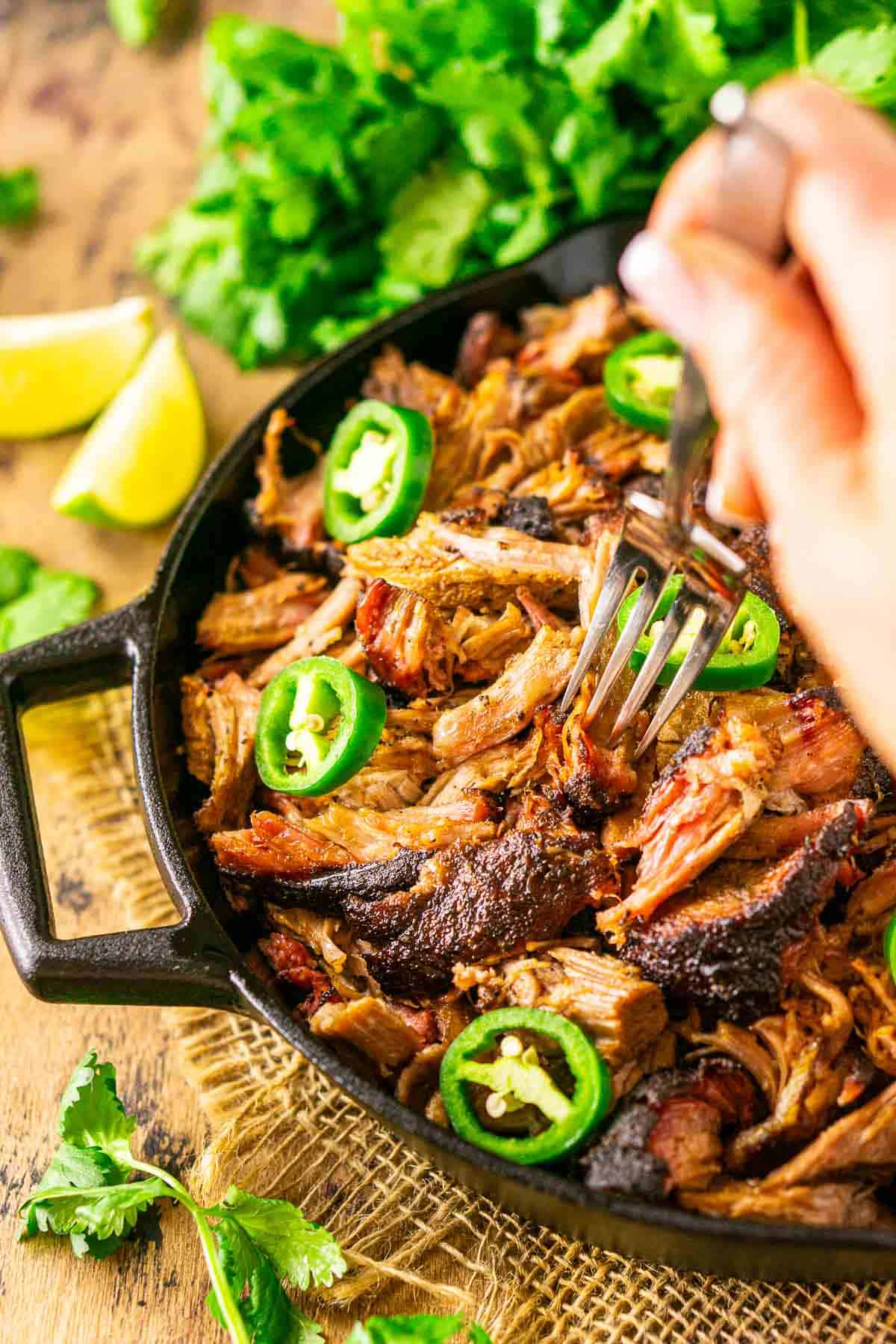
Get More Smoker Recipes
If you love this recipe, please leave a comment with a five-star rating — or simply hit the five-star button in the recipe card. Don't forget to sign up for my newsletter, and you can follow me on Facebook, Instagram, Pinterest and TikTok.
📖 Recipe
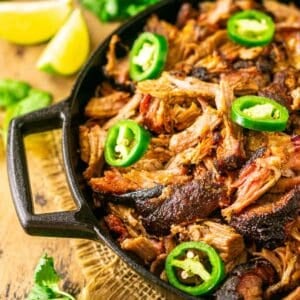
Smoked Carnitas (Mexican Pulled Pork)
Equipment
- Smoker
- Wood pellets, wood chips or wood chunks
- Water pan
- Leave-in meat thermometer
- Large disposable aluminum pan
- Heavy-duty aluminum foil
Ingredients
- 2 tablespoons chili powder
- 2 tablespoons packed brown sugar
- 1 tablespoon salt
- 1 tablespoon black pepper
- 1 tablespoon ground cumin
- 1 tablespoon garlic powder
- 1 tablespoon onion powder
- 1 tablespoon smoked paprika
- 1 tablespoon dried Mexican oregano
- 2 teaspoons cayenne pepper
- 2 teaspoons ground allspice
- 2 teaspoons ground cloves
- 7-8 pound pork shoulder specifically the butt cut
- 4 limes juiced
- 2 cups orange juice
- 1 cup melted lard
- 2 bay leaves
- 1 yellow onion cut into wedges
Instructions
- In a small bowl, stir together the spices to make the dry rub. Evenly rub the spices all over the pork, including the top, bottom and sides. You won't need the entire dry rub. Reserve what you don't use for step 3. If possible, cover the pork with plastic wrap and refrigerate overnight to dry brine for juicier, more flavorful meat.
- Remove the pork from the refrigerator 30-60 minutes before smoking and let it sit at room temperature. Meanwhile, bring the smoker to 225 degrees F. Place the pork directly on the grilled grates with a water pan and insert a leave-in thermometer into the thickest part of the pork without touching the bone. Close the lid and smoke the pork until it reaches an internal temperature of 165 degrees F, about five to six hours.
- Increase the smoker temperature to 275 degrees F, remove the pork and let it rest for 30 minutes. Cut it into several evenly sized chunks. If the pork has a bone, simply cut around the bone. In a large aluminum pan, whisk together the lime juice, orange juice, melted lard and reserved dry rub. Add the bay leaves and onion quarters to the juices and place the pork chunks on top with the bark facing up.
- Cover the pan with foil and pinch the edges to seal. Smoke again until it reaches an internal temperature of 200-205 degrees F or you can easily twist the pork with a fork, about three hours.
- Remove the pork from the smoker and keep it in the aluminum pan but loosen the foil so that it's more tenting the meat rather than tightly covering it. Let the meat rest for at least 30 minutes but preferably 60 minutes, allowing the juice to redistribute to the meat. After resting, move the pork to a cutting board and use two forks or meat claws to shred the meat. If you'd like to crisp up the pork bark, spread the pork on a baking sheet and broil for two to three minutes, though this step is optional. Enjoy!
Notes
- Store the leftovers in the refrigerator for three to four days or freeze for up to three months for the best quality.
- When you add the lard to cold orange juice, it might solidify a bit, but it will melt again once it’s back in the smoker.
- A proper braise should have the cooking liquid come about halfway up the meat. If you’re low, feel free to add more liquid or remove some if it’s too high and fully covers the meat.
- Nutritional information is only an estimate. The accuracy of the nutritional information for any recipe on this site is not guaranteed.


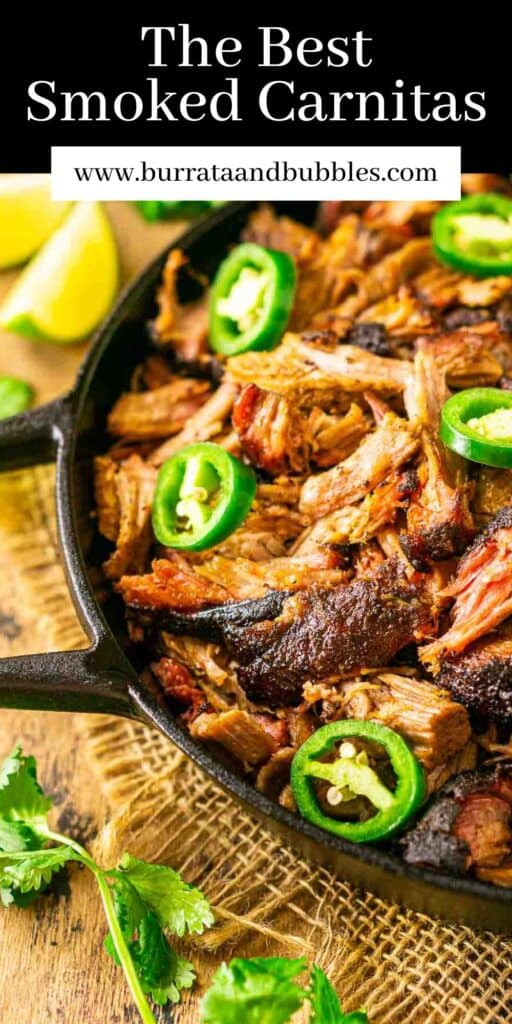
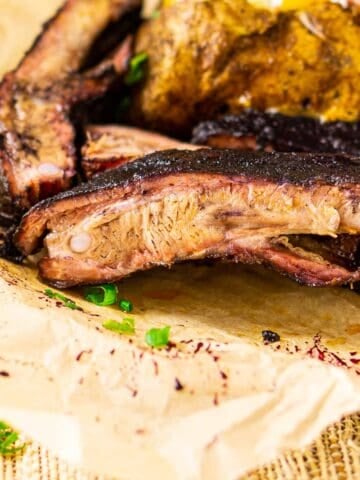
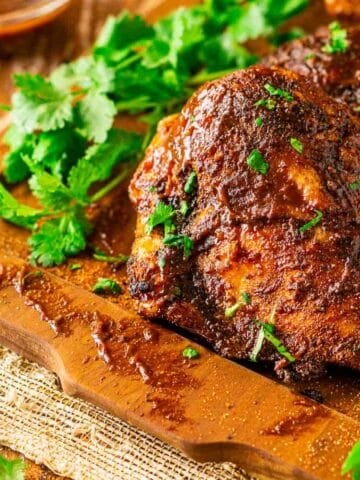
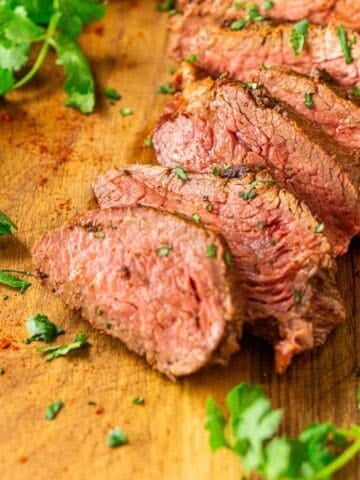
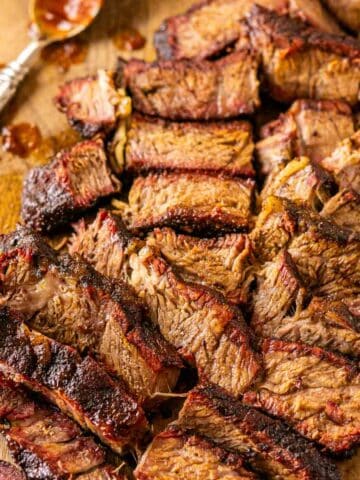
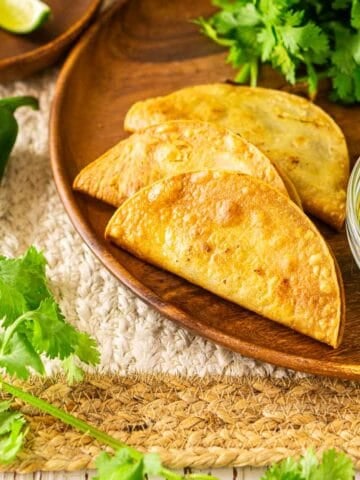
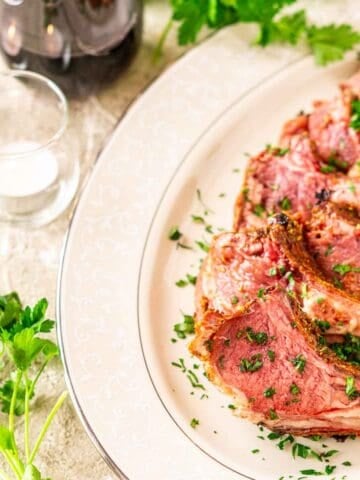
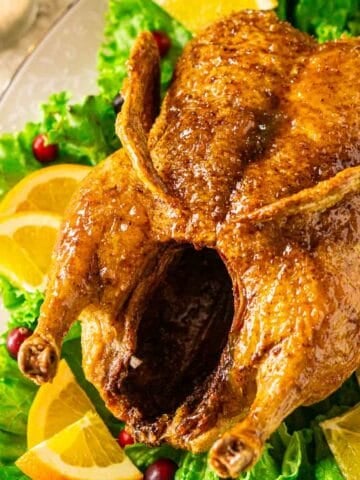
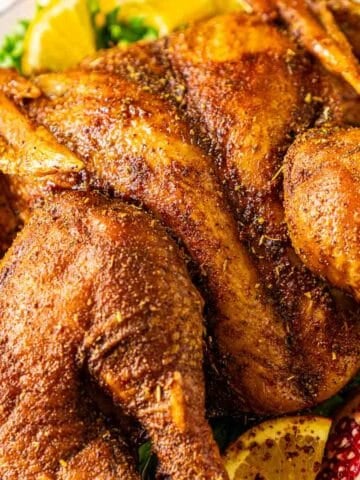
Shanna says
Favorite Carnitas recipe!
Thomas says
These were delicious even without dry brining overnight.
Amanda McGrory-Dixon says
Glad to hear that, Thomas! Thanks for sharing your experience.
Dina says
The flavors in this were so great! Made the poblano sauce to go with! So good!!!
Amanda McGrory-Dixon says
Love that! Thanks so much, Dina!
Anjali says
These carnitas had such amazing flavor and cooked up perfectly!! They were the best filling for tacos!
Amanda McGrory-Dixon says
I'm so glad you thought so, Anjali!
Andrea says
These carnitas came out so good. I don't think I've ever had carnitas smoked, but it was such a tasty way to make them. I'm already thinking of meal prep ideas. Thank you.
Amanda McGrory-Dixon says
You're so welcome, Andrea!
Susannah says
Loving these! The pork was just right. It shredded with no resistance and was super juicy. Awesome carnitas!
Amanda McGrory-Dixon says
Thanks so much, Susannah!
Cathleen says
I am so glad to have found this recipe!! It was such a hit last night, everyone was asking for the recipe. Thanks so much for sharing 🙂
Amanda McGrory-Dixon says
You're so welcome, Cathleen!